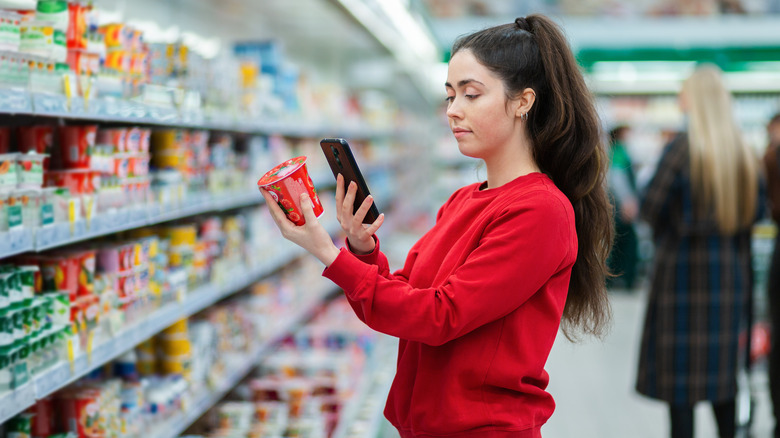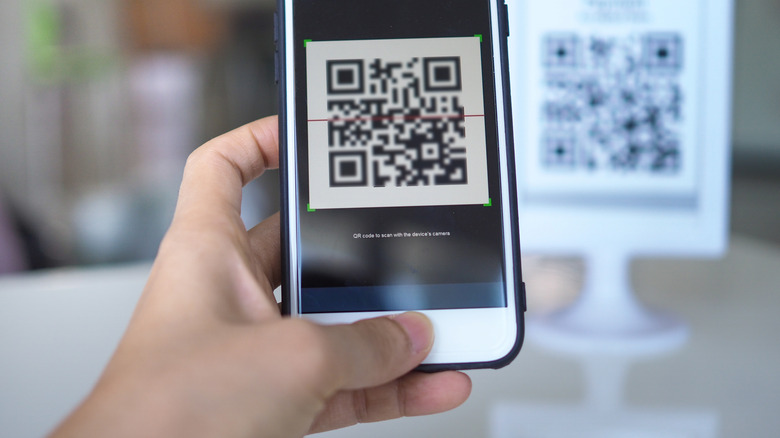QR Codes Could Be The Answer To Reducing Some Food Waste
The pandemic reintroduced the world to technology first developed in 1994: QR codes. Piloted by a Japanese car company, these tiny square designs are digitally readable labels that enable users to quickly retrieve information from images captured on a smartphone (via How it Happened). When scanning barcodes proved to be a difficult, inconvenient way to track the movement and storage of boxed car parts, engineer Hara Masahiro set out to come up with a better system (per Nippon). And he did.
Now, QR codes can be found on business cards, in classrooms, on menus, as payment facilitation, even on COVID-19 response trackers (via Scanova). Soon enough, you may see these grid-like markings at your local grocery stores, as QR codes have the potential to help make groceries cheaper and markets more effective by cutting down food waste. In fact, milk cartons may become the next destination for those boxy, ubiquitous QR codes.
A better way to shop
According to research posted in an USDA-ERS Economic Information Bulletin, dairy products fall in the top three categories contributing to the most food waste in the U.S. Milk waste accounted for 15% of school breakfast food costs, as one study published in the American Journal of Public Health demonstrated. But researchers at Iowa State University's Department of Food Science and Human Nutrition have recognized the importance of getting consumers informed and involved to make food systems more sustainable. QR codes have the ability to do just that.
A new Cornell study indicates shoppers will use QR codes to understand how long groceries can remain fresh. This kind of informational exchange can ultimately result in smaller industry footprints and less expenditure along manufacturing chains. When presented with the choice to buy milk with best-by labels displayed via QR codes or printed in ink, researchers (in the Journal of Dairy Science) observed customers buying items with QR codes more frequently (to add incentive for label checking, products with looming expiration dates were cheaper).
This shift to QR codes and food is perhaps newer to the U.S. than the rest of the world, though. For example, more than a decade ago, UK retailer Tesco incorporated QR codes at a subway station grocery store that allowed customers to scan grocery items on their mobile phones for home delivery, as reported by IT Retail. As for the U.S.? Keep your eyes open for QR codes at your neighborhood market soon.

